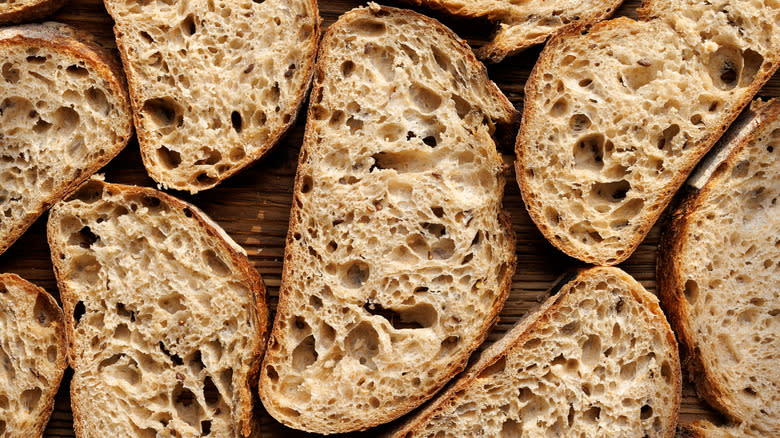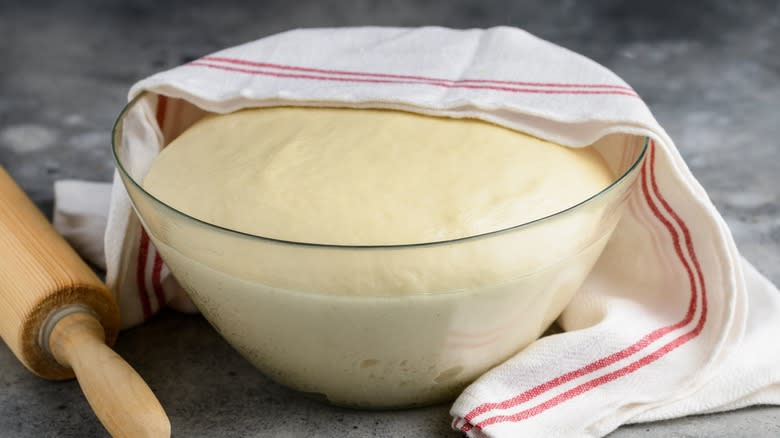This Is The Key To Perfectly Proofed Sourdough Bread Every Time

We all love a fresh-baked loaf of sourdough bread, but making bread can be as maddening as it is satisfying -- and no part of that process can be more frustrating than proofing. In bread baking, proofing is another name for letting the dough rise, and the timing that goes along with it can be really hard to master because there is no perfect way to measure it. Both over-proofing sourdough and under-proofing it can lead to bad outcomes such as flat loaves, a dense crumb, or too little of a rise in the oven.
In other words, getting the timing right is not only difficult, but also essential. So, for help with this vexing question, Tasting Table asked Nathan Myhrvold, the founder of Modernist Cuisine and lead author of "Modernist Cuisine: The Art and Science of Cooking," "Modernist Cuisine at Home," "The Photography of Modernist Cuisine," "Modernist Bread," and the upcoming "Modernist Pizza," for his advice on the best way to proof sourdough bread.
While most people are used to the idea of proofing at room temperature, Myhrvold has another suggestion, saying "we highly prefer to cold-proof many of our doughs." He explains that cold-proofing slows down the process, so the rise takes anywhere from eight to 18 hours. According to Myhrvold, that's a benefit. "This technique is a useful way to adapt the dough's needs to your own schedule," he explained, adding, "But it's not just about convenience: The long proofing time also improves the dough's flavor."
Read more: 12 Popular Grocery Store Butter Brands, Ranked
Cold-Proofing Gives You More Control Over Timing And Flavor

Nathan Myhrvold told us that cold-proofing means having more control over your dough, where "you can vary the time and temperature according to your schedule, needs, and personal tastes." He says it works especially well with bread like sourdough where the rise comes from your starter, but can be used with commercial yeast doughs, too. Best of all, that control also lets you experiment with the flavor of your bread.
Myhrvold says, "If you prefer very sour-tasting sourdoughs, you'll want to cold-proof as long as possible because longer fermentation produces more lactic and acetic acid. The opposite is true if you prefer a milder flavor." However, if you do opt for a long proof, he recommends adding diastatic malt powder when mixing your dough, which will help keep the yeast fed during the long rise. Myhrvold does warn that cold-proofs are not the best choice for every type of bread.
Enriched breads, where ingredients like butter and eggs are mixed in, won't rise because the fat in the dough will harden in the cold. He also says that you should pay attention to the temperature in your fridge, advising that while most models run between 33 and 40 degrees Fahrenheit, "if it's possible, adjust the temperature to 4 degrees Celsius/39 degrees Fahrenheit; temperatures any colder than that can slow down yeast fermentation too much." But with those minor concerns out of the way, a cold-proof will be the easiest way to great sourdough.
Read the original article on Tasting Table.


